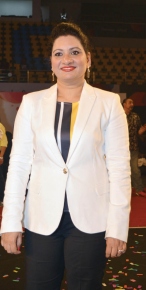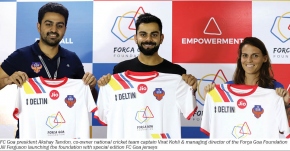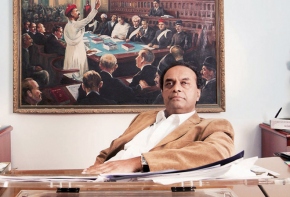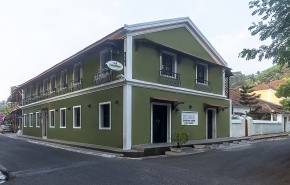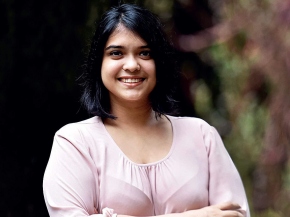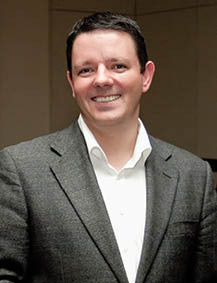- Axis Mutual Fund launches Axis Global Innovation Fund of Fund
- IHCL EXPANDS amã STAYS & TRAILS PORTFOLIO IN GOA
- Ending Period Taboo
- Scheme Snafu
- Equal Future
- Transcending Stereotypes
- Reboot for 2021- Refreshed & renewed with Jiva spa @ Taj, Goa
- Cottonfab 2021 at Kala Akademy
- Lockdown Dairy: Fests & Zatras remembered
- Aby Jose
A stroke of serendipity
As Goa gears up for the third edition of the annual multi-disciplinary Serendipity Arts Festival 2018, Viva Goa talks to founder and chairman of Hero Enterprise Sunil Kant Munjal and festival director Smriti Rajgharia about the initial struggles, Goa’s role in the festival, the work of the foundation and the vision behind Serendipity
Goa has been home to the Serendipity Arts Festival since its inception in 2016. The one-of –its-kind arts festival aims to bring about a positive change in the field of arts and culture across India on a large scale.
Curated by a panel of eminent artists and institutional figures, It spans the visual, performing and culinary arts, including music, dance, visual arts, craft, photography, film and theatre. The third edition this year is scheduled for December 15-22, 2018.
Besides giving emerging artists an opportunity to showcase their work, the festival addresses pressing social issues, such as arts education and pedagogy, cultural patronage, interdisciplinary discourse, and accessibility to the arts.
The festival is organised by the not-for-profit arts and cultural development organisation called the Serendipity Arts Foundation, started by Sunil Kant Munjal, to foster cultural development and support artists across South Asia.
Founder of the Serendipity Arts Foundation and chairman of Hero Enterprise, Sunil Kant Munjal and Festival director Smriti Rajgharia discuss the teething troubles, Goa’s role in the festival, the work of the foundation and the vision behind Serendipity
What was your vision behind starting the Serendipity Arts Festival?
Our family has always been deeply interested in preserving Indian culture, and I have been involved in promoting the performing arts in North India for several years. This festival is an attempt to go much further. We wanted a platform that makes India’s intangible heritage both contemporary and inclusive.
Serendipity brings many artists, initiatives, and patrons together as part of an interdisciplinary event. The objective is to challenge traditional boundaries and redefine engagement with the arts. In the two editions so far, we have been able to showcases skill, diversity and interdisciplinarity on a scale that has not been attempted in the country before.
What activities are undertaken by the foundation?
Besides holding the Arts Festival in Goa every year, the foundation works with school children, including the girl child and street children. It also works with emerging and acknowledged artists from across South Asia and organises exchange programmes and residency programmes aimed at skill development and livelihood enhancement.
We are also involved in restoring community spaces. The festival has led to the opening up of the Adil Shah Palace in Goa, and renovating the Public Works Department (PWD) complex. Both these buildings have brought the arts back to the public.
What made you choose Goa as the destination for the Serendipity Arts Festival?
All roads lead to Goa in December. This is also one of the most cosmopolitan places in India with a diverse and accommodative culture. Goa provides a perfect backdrop for people from all demographics to come together and experience the arts. The stretch on the banks of River Mandovi is idyllic, and this year, over 1,500 artists will honour the arts over eight days.
How has the government of Goa extended its support to the festival’s success?
When we first shared our vision with the Goa government to create a platform for art and culture, they were very excited and supportive. To ensure an authentic environment, the state government has let us renovate the Adil Shah Palace and the PWD complex, and worked with us on a number of beautification projects.
The year 2018 happens to coincide with the 175th anniversary of Panaji, so we are also collaborating with the state government on various community projects.
If there is anything that Goa lacks in the field of art, what would that be?
Possibly a lack of exposure is a shortcoming. Indian cities lack infrastructure to support the arts and Goa is no exception. The Kala Academy is a cultural centre in the city, but there is a need for more such centres.
Goa must have dedicated cultural hubs where activities take place throughout the year, and these should attract artists and performers, along with audiences from around the world.
What message would you like to give to all the creative minds of Goa?
First, I request all creative minds to take out time this December and visit to the Serendipity Arts Festival. There is no entry fee, and I am convinced that the experience will change the way they perceive culture and the arts. This is not just a festival of performances; it is also a festival of conversations - where there is inter-mingling between artists, curators and patrons. Creative minds can be a part of this incredible atmosphere either as visitors, or as volunteers. Last year, we had 450 volunteers from all walks of life coming in. Second, this festival is the outcome of contributions and tireless work from many institutions and individuals. Their aim is to build a vehicle on which the arts can move forward in Goa and across India. It will be impossible to sustain this momentum without a constant communication effort; so, word-of-mouth, networks and social media are a lifeline for Serendipity.
We would like the people of Goa to help spread the word and give us ideas to make this festival even more interesting. We also welcome contribute financial contributions, as this is a not-for-profit community project.
Read the full article in 'Viva Goa' magazine copy.
Viva Goa magazine is now on stands. Available at all major book stalls and supermarkets in Goa.


